Isle Pioneer 3 iSUP Review
Pros
- One of the lightest-weight all round boards on the market
- Stable, user-friendly plan shape
- Fabulous first time board option
- Stacks of configuration options thanks to the Isle link system of fixing points along each rail
- Clean uncluttered deck
- Can add Isle’s kayak accessories to make the board even more versatile
- Great board for heavier riders and for carrying gear
- Great price for a quality product from a premier US SUP brand.
Cons
- Not going to win any races (not that it’s supposed to)
Don’t be fooled by appearances! The Isle Pioneer 3 may look very similar to its predecessor, but the upgraded construction and a few other cunning tweaks have raised this classic beginner-friendly all-round design to a whole new level of enjoyable performance and fun factor.

The Pioneer 2 has been a huge success for Isle, who really seemed to have got it just right with their simple yet effective super-stable all-rounder design. Yet this season Isle has replaced it with the Pioneer 3, so we were very keen to get our hands on this upgrade to see what it was all about.
In the review business we’re regularly disappointed by ‘new and improved’ versions that don’t actually deliver anything other than a tweak of the color scheme. Indeed, we often wish brands would remember that ‘if it ain’t broke, don’t fix it!’ is a really wise policy, especially when it comes to products that already seemed pretty damn fine to us.
Sometimes though, an upgrade can be substantial, as is definitely the case with the Pioneer 3.
Isle has kept the same shape as the Pioneer 2 (if it ain’t broke…), but changed the construction, shaving off a whole bunch of weight and giving the board a much more sprightly and alive feel. We’re really impressed with the end result, and we’ll tell you exactly why in this review.
We think the Isle Pioneer 3 would be a great SUP for paddlers who:
- Want a stable, user-friendly platform
- Want a board that’s great for learning the basics on but lively enough to be fun for intermediate level paddling too.
- Love a board that’s light and easy to carry
- Value a clean, uncluttered deck
- Love the idea of being able to easily reconfigure their board with a whole stack of different accessory options.
Isle Pioneer 3: Spec Sheet

- Board Category:Beginner/All-round
- Listed Board Dimensions: 10’6 x 34” x 6”
- Measured Board Dimensions: 10’6.1 x 33.9”
- Listed Board Weight: 19 lbs
- Actual Board Weight (board only, not inflated): 19 lbs
- Listed Max Capacity: 285 lbs
- Recommended PSI: 17 PSI
- Fins: 9” centre fin
- Paddle: Remix Carbon adjustable SUP paddle
- Board Shell Construction Materials: Single layer PVC
- Drop-stitch type: Woven
- Price Range: $695
- Warranty: 5 years (conditions apply)
Performance Review of the Isle Pioneer 3 Stand Up Paddle Board
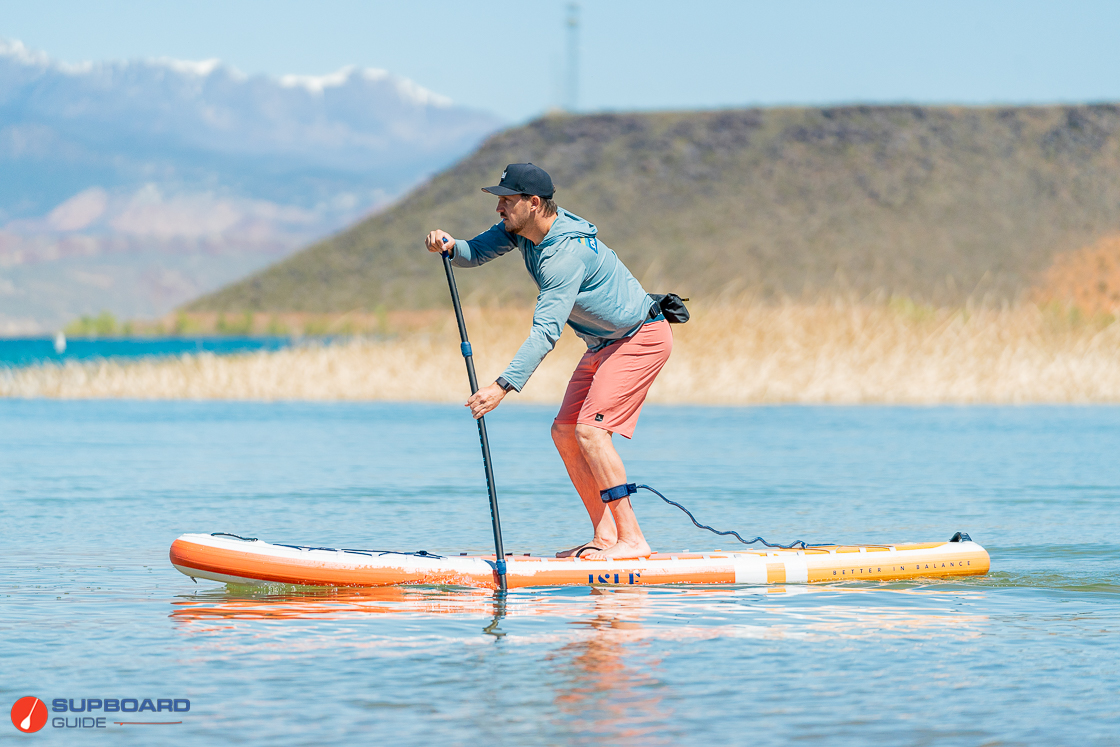
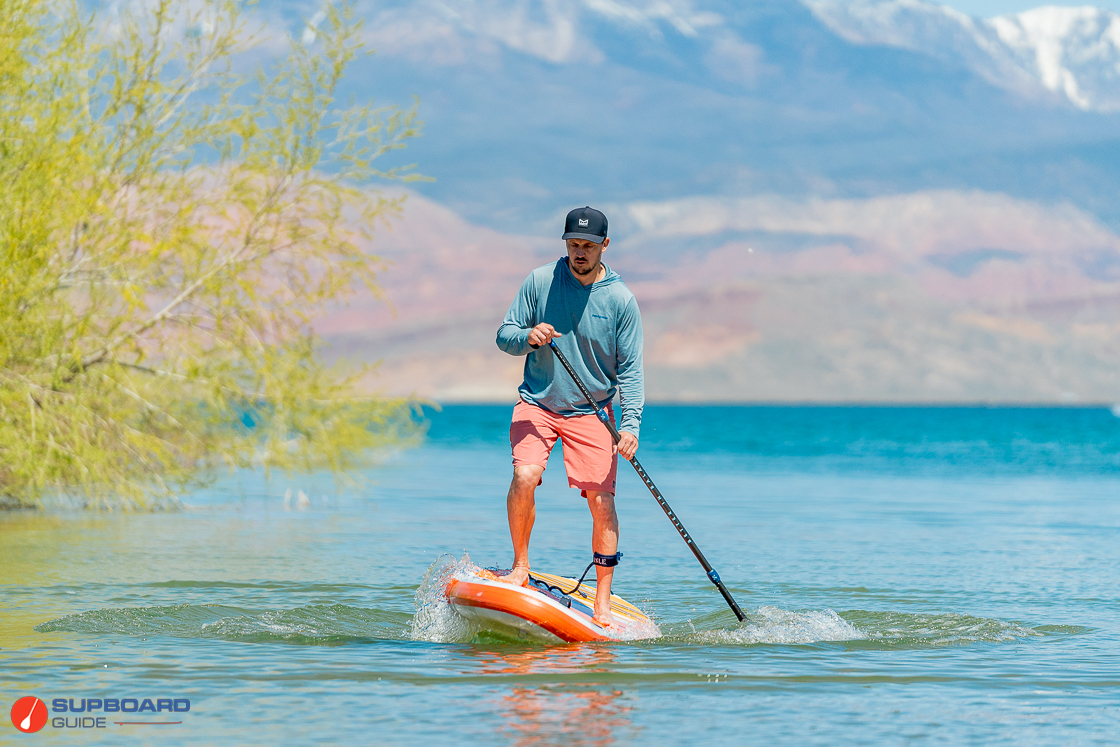

Overall Score: [9.5/10]
- Stability: 9.6/10
- Speed: 8.6/10
- Tracking: 8.5/10
- Maneuverability: 9.2/10
- Construction Quality: 9.6/10
- Features/Accessories: 9.7/10
Stability Rating: [9.6/10]
If you want to learn more about how the design of a board influences the stability, check out the video on understanding board shapes on our youtube channel.
This is definitely one of the Isle Pioneer 3’s strongest performance characteristics. Not only does it boast a substantial 34” of width, but the width is sustained throughout much of the board’s planshape.

As can be seen from the plan-shape pic above, the board maintains its width quite a long way forward of the central standing area, and then the wide square/diamond tail also allows for plenty of width in the rear quarters of the board too, all of which adds up to a super stable ride. Indeed, this aspect of the board’s performance is well proven – the Pioneer 2 won many plaudits for its stability, and the overall plan shape has not altered significantly between the Pioneer 2 and the Pioneer 3. You can move forward and back on the board very easily, and/or load it up with a whole bunch of cargo.
As well as excellent primary stability, the board also gives really good secondary stability. All that width in the nose and tail ensures that if you try and push a rail down into the water, there’s a whole lot of buoyancy pushing it right back up again. Anyone who values stability in their paddleboard really will enjoy this design. It will be a great weight carrying platform too.
Speed Test: 8.6/10
| Isle Pioneer 3 | |
| Top Sprint Speed: | 5.3 MPH |
| Average Cruising Speed: | 4.5 MPH |
To obtain our speed test results, we use a Speed Coach Sup 2. This gives us accurate readings on how fast we are paddling and our current stroke rates. For the top sprint speed, we paddle as hard as we can for approximately 10-15 seconds and then record our average speed. For the casual test, we paddle at 35-40 strokes per minute for approximately 30-60 seconds and record the average speed.
We really like the bullet-like plan shape of the Pioneer, because as well as packing a whole lot of stability into the design it also produces a relatively low-drag feel – the board is easy to paddle. Nevertheless, a 10’6 x 34” board is never going to be a speed machine.
If you want to paddle fast, you need more length and less width (you can see this in the Isle Explorer Pro 14’ here). Indeed, when we tested the Isle Pioneer 2 we noted that ‘it’s not built for speed’. It’s a cruiser, rather than a racer.
However, the changes that Isle made with the construction of the Pioneer 3 have reduced its weight significantly, which has had a very positive effect on the cruising speed. The board potters along very happily at a surprisingly decent pace. Weight has a major impact on momentum; a light board is simply easier to paddle, full stop.
The 4.5mph we achieved on the Pioneer 3 is extremely impressive for a 10’6 x 34” design. It was only when we tried to step up the pace that the large width and short length of the board made itself apparent; try as we might we couldn’t get the board to go much faster (it’s almost unheard of for us not to be able to easily achieve sprint speeds of at least 1 mph faster than cruising pace). The slight extra degree of flex also makes itself apparent when you really try to go fast.
But this should not in any way be seen as a problem or negative for the Pioneer 3; nobody should be buying a 10’6 x 34” because they want to win races. Whereas the fact that it cruises so easily and effortlessly at a very respectable pace will be a bonus for everybody.
Tracking: 8.5/10


Again, the bullet-like plan shape of the Isle Pioneer 3 delivers the goods; despite being short and wide (generally not considered advantageous in the quest for excellent tracking), and only having the one fin, this board actually tracks very nicely.
The fin box has been moved slightly further towards the tail than on the Pioneer 2, which also aids with the tracking. Any paddler with reasonable technique should find that they can hold a fairly easy and consistent course on this board.
Maneuverability: 9.2/10
In theory, a good tracking score usually means a less positive review in the maneuverability department. This is true to some degree with the Pioneer 3, but the great thing about a 10’6 board is that it’s always going to be relatively easy to turn. The Pioneer 3 turns easily and readily, especially as the board feels so light and easy to move around.
Just geeking out for a very quick bit of design analysis for the nerds amongst you, we really like the way Isle use the diamond tail configuration on this board. The down side of a diamond tail is that it reduces the ‘effective rail’ (the length of rail that is responsible for providing grip and directional stability, rather than release), but the Pioneer can cope with that because it’s so wide already. (This is why other designs in the Isle range, such as the Explorer, feature a square tail rather than the diamond tail, because maximising the stability is far more important on the narrower design). The up side of the diamond tail is that it loosens up the board’s turning, without significantly reducing the tracking capabilities. Another reason why this board is very comfortable with normal paddling turning techniques.
Plus of course, all that fabulous width in the rear half of the board makes it extremely easy and obliging if you fancy taking a few steps back towards the tail in order to lift the nose a bit.
All in all, while a board this wide is never exactly going to feel throwabout, being so light and easy to turn we’re happy to give the Pioneer 3 a pretty good score in the maneuverability category.
Construction Quality: 9.6/10

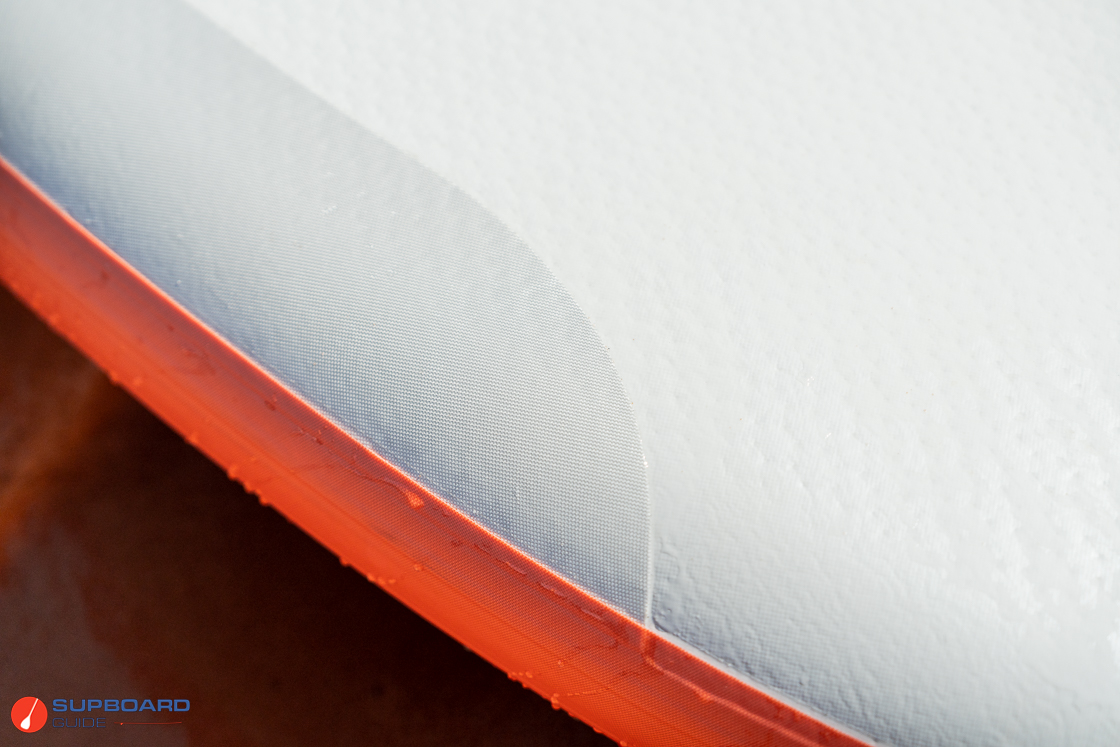
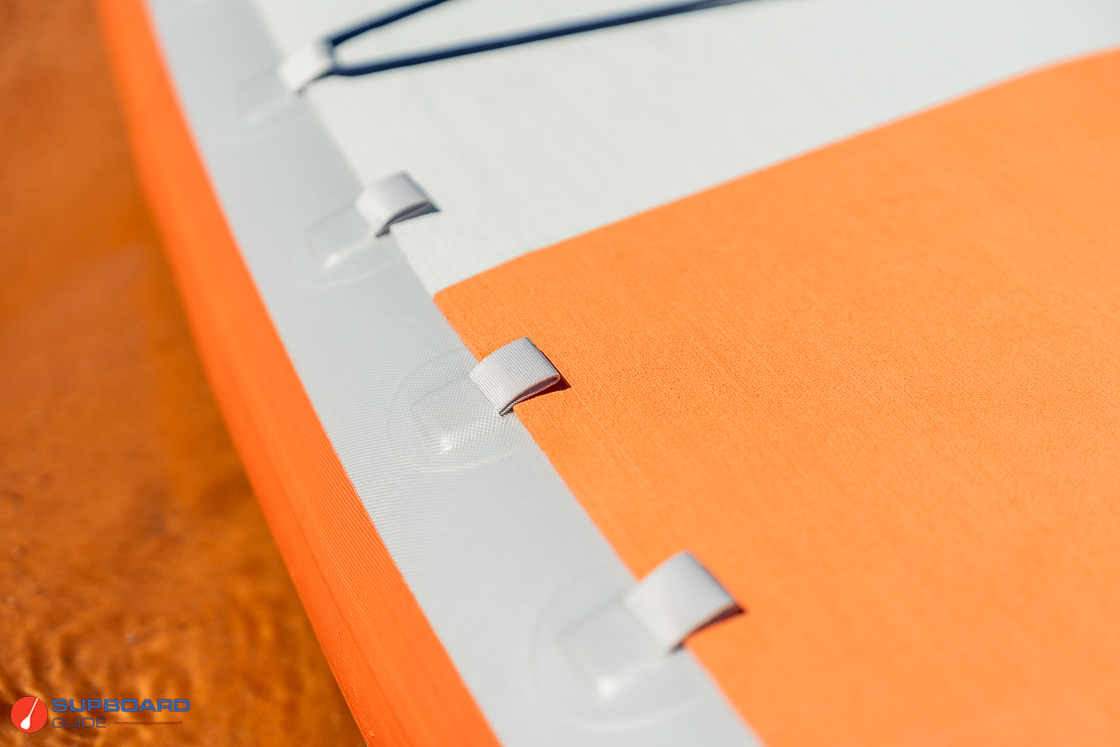

This is where we find the main difference between the Isle Pioneer 3 and its predecessor the Pioneer 2. The Pioneer 2 used the now-standard ‘Fusion’ construction system where 2 layers of PVC are fused together, whereas the Pioneer 3 has gone for a single layer system.
Other than for the very cheapest budget boards, single layer construction seemed consigned to the scrapheap when Fusion first came along, because typically single-layer iSUPs were flexy and easily punctured, whereas Fusion construction allowed for much more rigid and robust boards for a relatively small weight increase.
However, in recent years many brands have started revisiting single-layer construction using more modern materials and manufacturing techniques, as is the case with the Isle Pioneer 3. By moving to their single-skin construction, with the PVC layer fused directly to the dropstitch substrate, they’ve reduced the weight by nearly 20%, which is huge (especially when you consider that they’ve increased the deckpad area too) – with only a very slight decrease in rigidity, barely discernible in normal paddling.
The Pioneer 3 also now has welded seams, and longitudinal ‘parabolic’ PVC stringers built onto each rail to increase rigidity. All up, the board feels extremely durable and well-built, and Isle obviously thinks so too as they’re confident enough to increase their warranty from 2 to 5 years!
Indeed, the only difference between the Pioneer 3 and Isle’s flagship Pioneer Pro range is that this board uses PVC stringers instead of the ‘Infinity Fiber’ rail system used on the Pro boards, which adds to the cost but makes the board even stiffer.
It’s great to see this sort of development happening. Isle’s R & D has pushed them to the forefront of the industry in recent years, and we’re excited to see what they come up with next.
Board Stiffness:

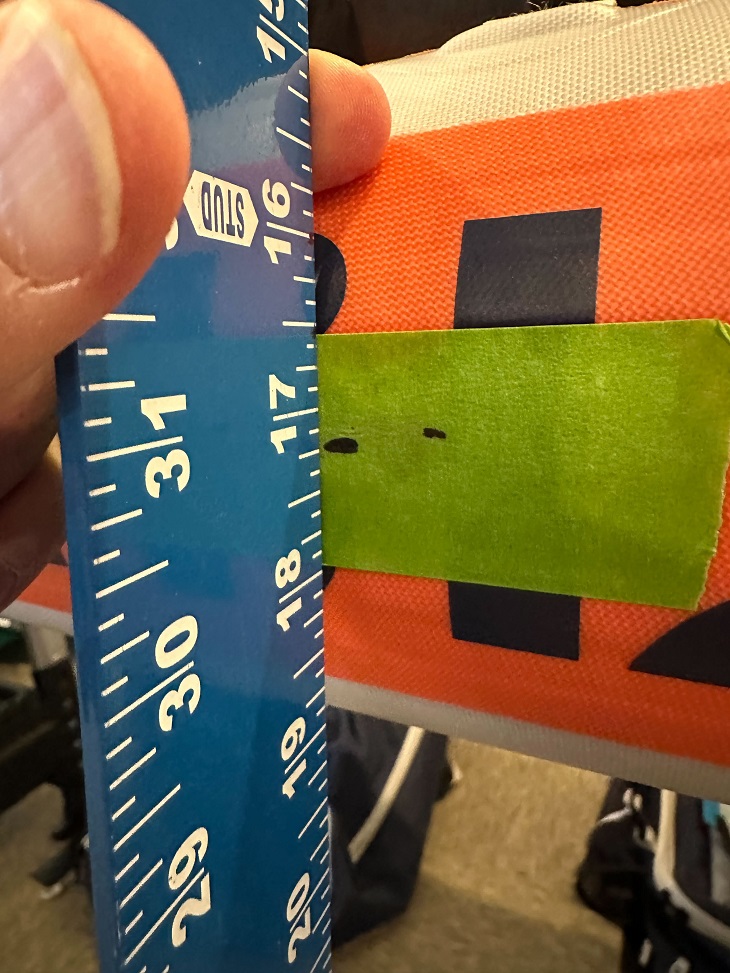
Stiffness Test: 1.25” Bend
As discussed in the previous section, the Pioneer 3 features a significantly different construction system to its predecessor. The overall effect is a very slight decrease in rigidity; the Pioneer 2 registered 1.18” deflection in our bend test, as compared to the Pioneer 3’s 1.25”.
This is actually very impressive; we were expecting to find considerably more difference. It’s a testament to the excellent construction methods used by Isle. Indeed, while 1.25” of deflection is slightly above average compared to the multitude of other boards we’ve done our deflection test on, the reality is that in normal paddling on this board, you don’t actually feel any flex at all.
There is no bounce or reverberation in the board until you really try to paddle it hard and fast. Even with heavier paddlers on board, the Pioneer 3 feels stiff.
To ascertain the rigidity of each board we review, we use our own specific laboratory bend test process. The board is inflated to its maximum recommended PSI and then placed across two sawhorses positioned exactly 7 feet apart. We then measure the distance from the middle of the board to the floor. Then, we place a 150 lb weight on the middle top of the SUP, and measure the distance to the floor again. The difference between the two measurements shows the deflection, or ‘sag’, that the board has experienced due to the added weight. We have been reviewing the stiffness of boards using this technique since 2021 and while it isn’t an exact replication of the weight distortion that occurs when a rider stands on a SUP board in the water, it still gives a very useful comparative tool in determining the stiffness of the board’s construction process.
Features/Accessory Review: [9.7/10]
Features:


The first thing you notice with the Isle Pioneer 3 is how clean that deck looks. You could remove those two bungees in a couple of seconds, and you’ve got a completely uncluttered deck, ideal for yoga or simply chilling out for a snooze! But then, the second thing you notice is the extraordinary array of fixing options for the bungees, no less than 19 loops on each side, allowing you to set up your fittings up in any way you choose.
Isle offers a great array of accessories to utilize this new ‘Isle-Link’ system, including kayak seats, inflatable footrests, fishing crates, waterproof backpacks and more. We’ll reserve judgment on the use of the white webbing for a few seasons – in previous years, white webbing fittings used by other brands have shown a propensity to rot quite quickly, particularly in contact with salt water and lots of sun. (It wouldn’t be difficult to glue a new fixing on even if this did happen though).
The board also has paddle holder straps on the right hand rail, again allowing you to store the paddle well clear of the deckspace area.
The three handles are generously sized and easy on the hands. Full marks to Isle for giving full coverage with the deck-pad. The rearmost section of pad is slightly textured, the rest relatively smooth but still comfortable underfoot and offering pretty good grip. The main deck-pad material is slightly more absorbent than some so it takes a little longer to dry out after getting wet. There isn’t a raised kick pad in the tail but on a board like this it’s not exactly a necessity,
On the underside, we find another noticeable change from the Pioneer 2, which had a 3 fin configuration. Whereas the Pioneer 2 has just the single fin-box, placed a little bit further back. However, as discussed in the Tracking section, the board does not seem to be compromised at all by the removal of the side fins.
Another feature for the Pioneer 3 is the split fin-box, which makes it easier to roll the board up. The standard 9” fin clicks in without the requirement for a fin-bolt and screw, but the fin-box is based on a standard US box system so any alternative US-compatible fin can easily be used. The only other fitting on the underside is the towing eye under the nose.
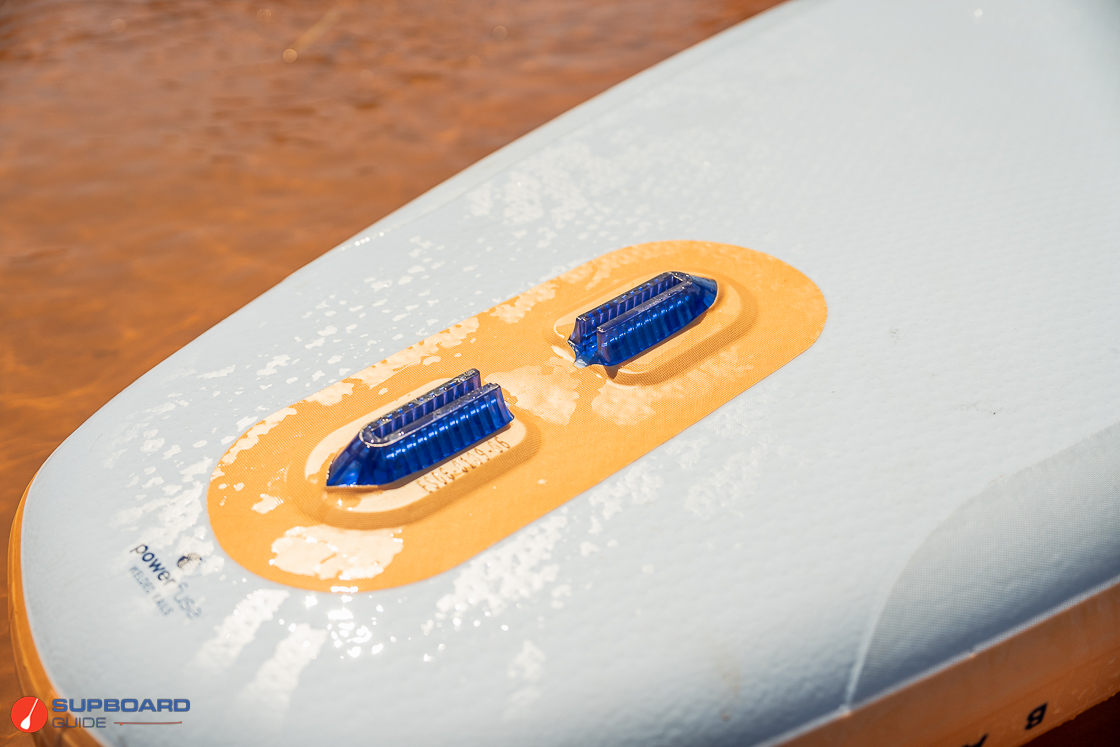
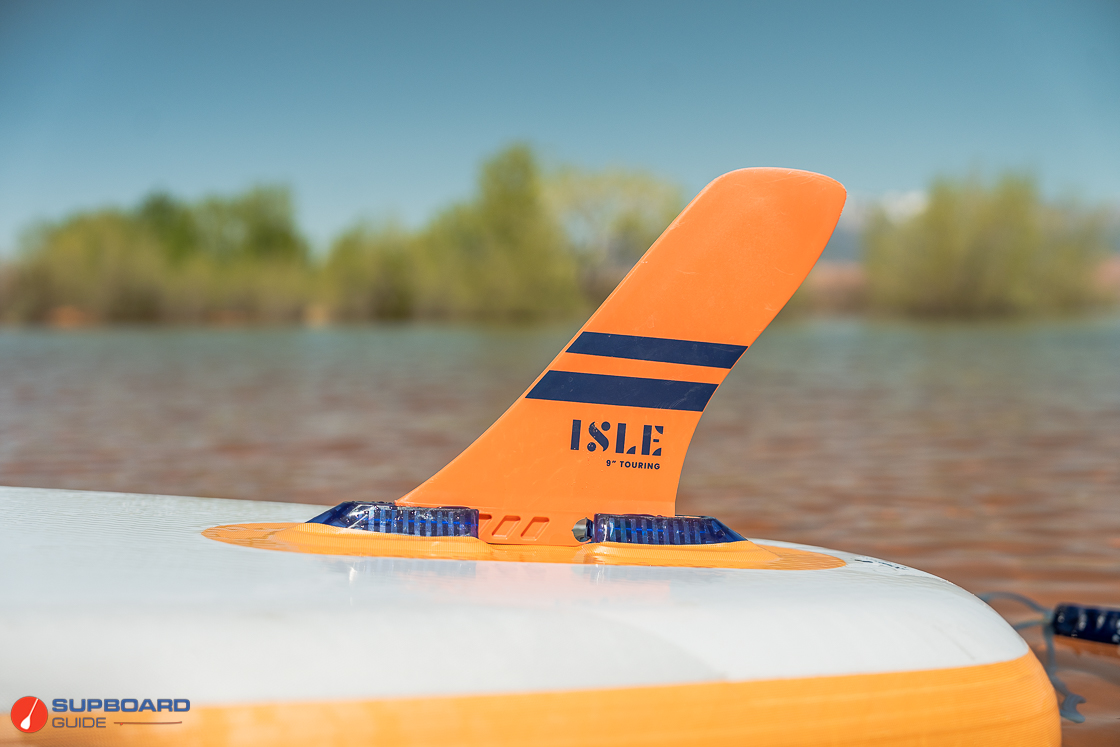
Included Accessories:


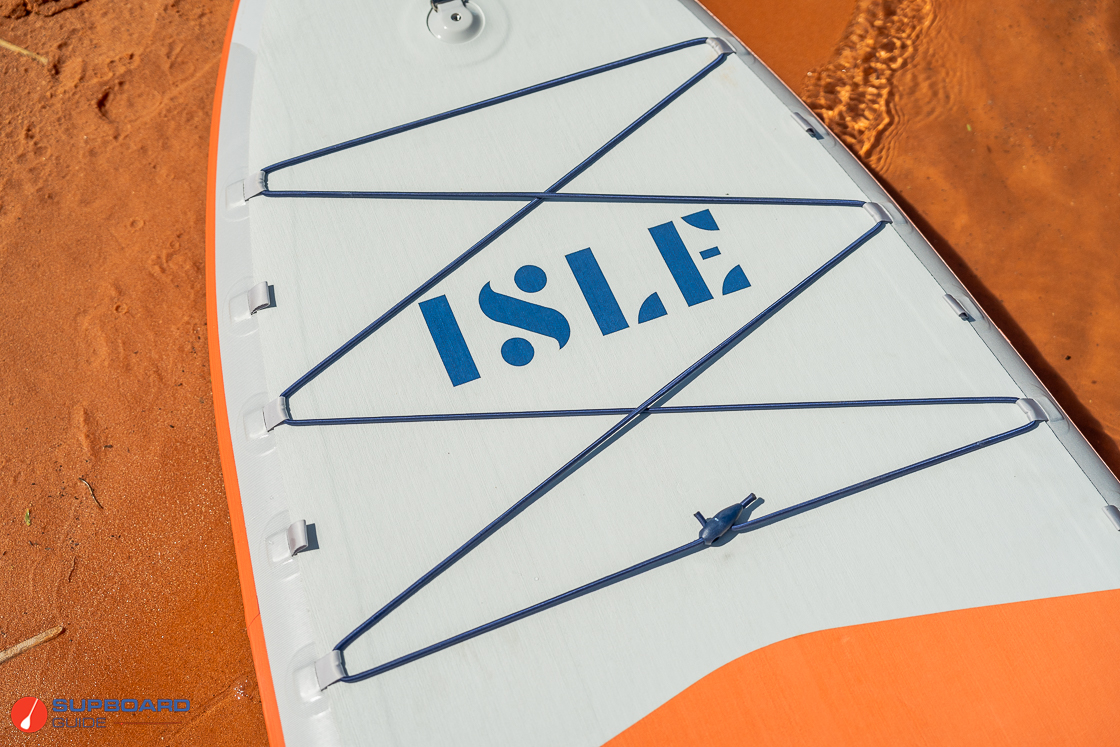
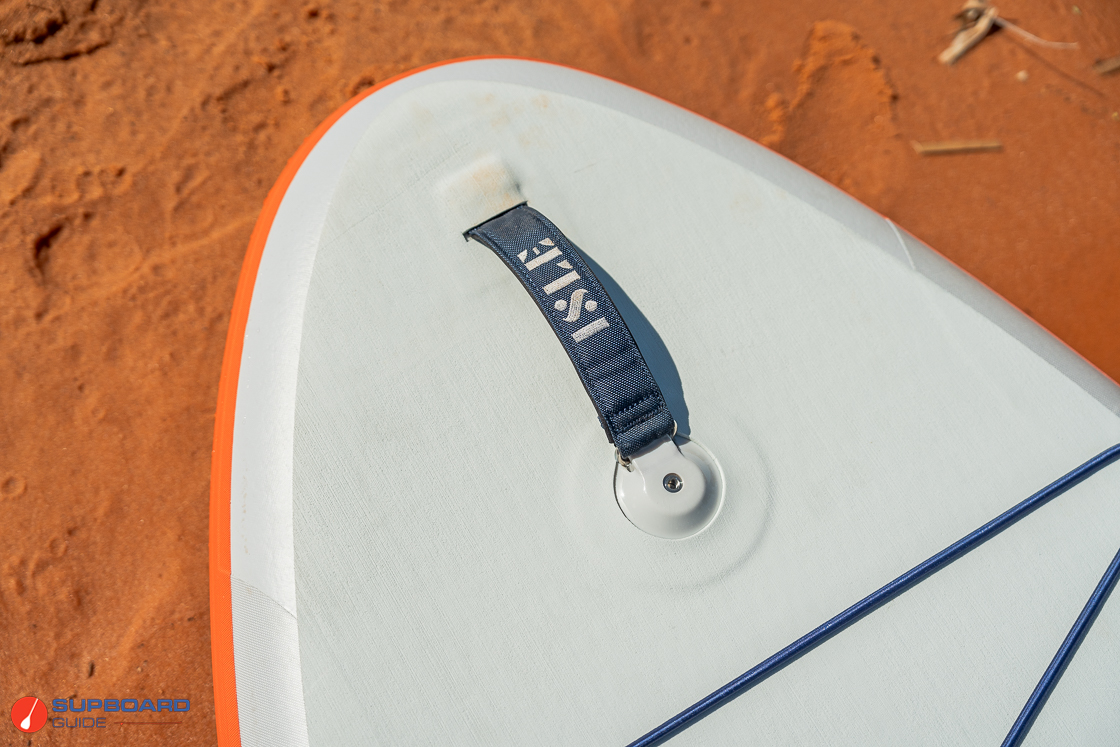

The Isle Pioneer 3 comes as standard with:
The generously sized 3 Series Wheelie backpack has enough room for the rolled-up (rather than folded) board, plus whatever other accessories you’re needing to carry. The bag has backpack straps that can be tucked away when not needed, and plenty of carry handles.
The Isle Remix Carbon 3-piece adjustable SUP paddle features an 85” nylon blade, and a carbon/fiberglass shaft, and converts easily from SUP to kayak mode by adding a second blade (sold separately). The adjustment range is 14”, catering for most paddler heights. We found the paddle to be light, pleasant and easy to use, and very well suited to the board generally. The paddle comes in its own lightweight mesh carry bag, which is useful for keeping all your gear organised in the backpack.
The Totora double action hand pump, which has a removable base for easier storage
The ultra-light straight leash is 6’ but stretches out to 9’. As you’re standing about 5’ along the board from the leash fixing point, it does mean that the leash drags a little in the water if you wear it around your ankle. You can tuck the rear section of the leash under a bungee to prevent this happening, or wear the leash higher on your leg or using a waist-belt attachment.
Summary Review of the Isle Pioneer 3

Isle has delivered a really excellent upgrade to the already very successful Pioneer 2. They’ve done the smart thing and resisted the temptation to tinker too much with the already proven shape, instead simply turbocharging the design by shaving a big fat chunk off of the board weight.
The board still delivers the same super-stable package, but now feels even lighter and more fun underfoot, and cruises at a faster speed too. The light weight will also increase its appeal for those who struggle with getting their board to the water, or on and off the car roofrack, etc.
Moving all the cargo fixings onto the rail so as to declutter the deck is also a really cool move, greatly increasing the all-round versatility of this package.
In our opinion, the Pioneer 3 is now unquestionably a top option for anyone looking for a super-easy all round board with great weight carrying capacity and stability, that still feels light, quite sprightly and fun to use.
It’s also a great value when you compare the price (MSRP $695) and features. In our opinion, it’s one of the more feature packed mid-range ($500-$1000) SUPs we have seen so far this year.
Overall, great job Isle! But you’ve set yourself a tough act to follow – will you be able to raise your game so substantially again when it comes to the Pioneer 4?
Happy paddling! We hope you enjoyed this review of the Isle Pioneer 3. If you have any questions or comments please leave us a comment below!
SupBoardGuide
Latest posts by SupBoardGuide (see all)
- Best Paddle Boards for Beginners, 2025 - July 3, 2025
- Hala Radito Whitewater iSUP Review – 2025 - June 27, 2025
- Hala Atcha 96 Whitewater iSUP Review – 2025 - June 16, 2025







